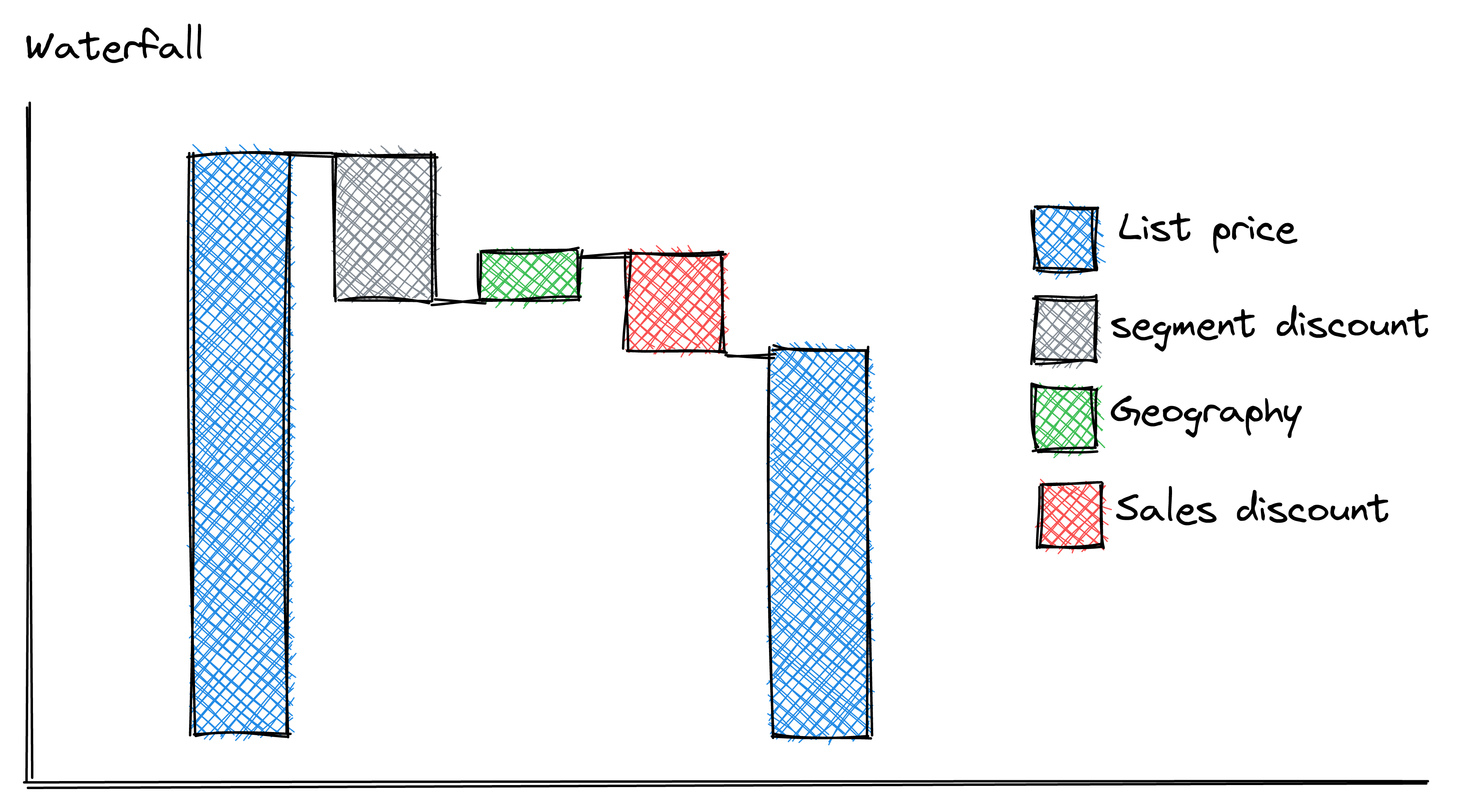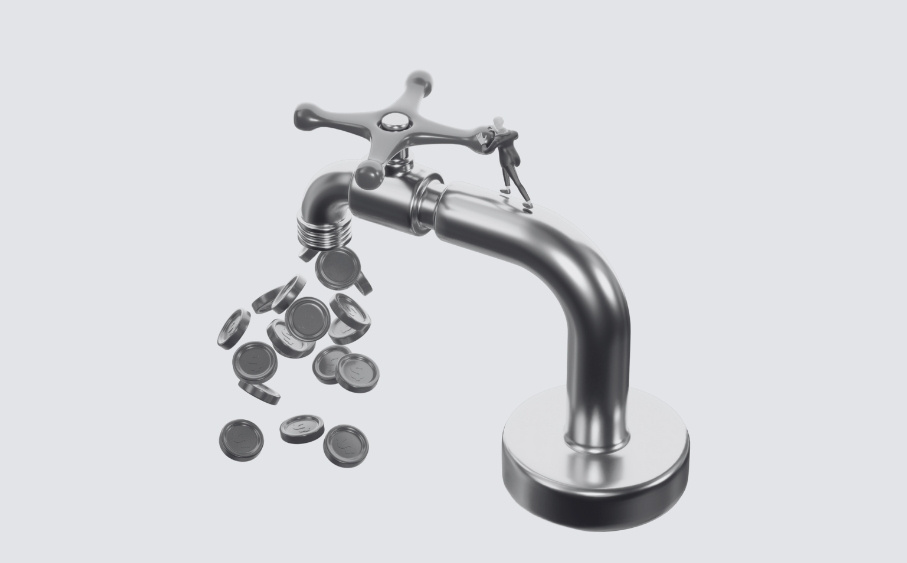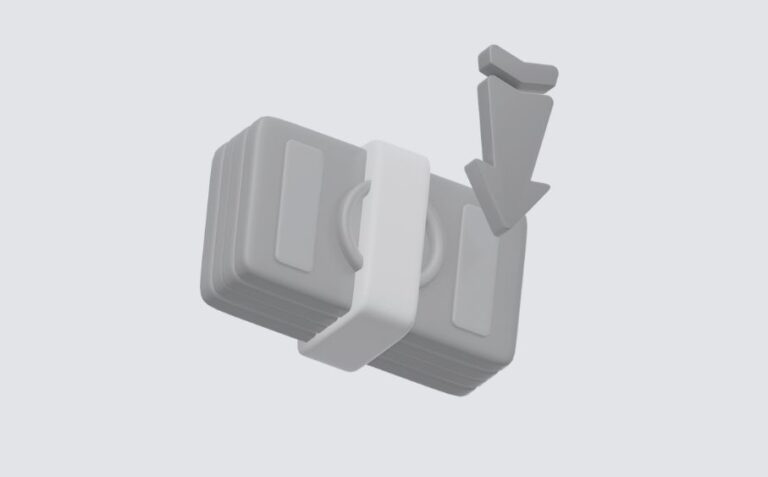Ecommerce merchants need to make sure they’re always one step ahead of the competition. While competitiveness depends on several factors, the base level always comes down to assessing specific parameters to determine the optimal price for your products, either to increase profits or to prevent the leakage of the business’s money. That’s where the price waterfall comes in handy.
A price waterfall is a visual assessment process for determining which factors affect the price of a product or service, showing where profits are coming from by adding each attribute to the base price throughout the product’s life cycle. Businesses use the price waterfall schema to manage their revenue efficiently. Because one, producing multiple products may not be the same as producing a single product in terms of indirect costs. Secondly, the price of a product undergoes several transformations before reaching its list price, so the price waterfall method is helpful in seeing which steps affect it and where a business might lose money to reach its final profits.
How to Calculate Price Waterfall?
Let’s assume you have a base price for your product. You know, that is the cost of manufacturing the products. Then you need to add the specific attributes you would like to include in your products and assess how they should be priced. The value you would like to add to each product should differ by its nature. Let’s assume you sell furniture. You would like to offer free delivery, returns, assembly upon delivery, and a warranty. Whereas if you sell musical instruments, you would like to provide technical support, warranty, free online courses, and maintenance services. For luxury brands, as we all know, customers pay for the prestige and exclusivity. Each attribute has a different cost depending on the business type. Also, research and development costs can be added in this stage.

List Price
After these attributes are included, the brands achieve a reference price that they convey to retailers and resellers locally and internationally. The list price is the undiscounted starting price of the products. The products then receive their final list price after packaging, branding, advertising, staff salaries, and rent for brick-and-mortar stores, or infrastructure costs for online businesses.
Discounts
Some time after skimming the market at the list price, companies start promotions to recover product cost and profits. There can be several discount types before a product reaches the end of its life cycle. The discount types can include large order discounts, bundle offers, seasonal and time-limited discounts, as well as referral and loyalty discounts. So, this way, the sellers affect the final profit amount by offering promotional discounts.
Pocket Price
Lastly, after all discounts and rebates, the amount left as clear profit is called the pocket price or net price. Since every business is different, its schema and earnings after all deductions will also differ. For example, some might operate locally, while others can operate internationally; this would affect their pricing waterfall, since one of them would not be affected by multiple countries and currencies.

Which Companies Can Benefit From Price Waterfall?
Large companies that have the potential to leak profits from the revenue they receive can greatly benefit from using a price waterfall schema to identify them. On the other hand, small ecommerce businesses may not have the resources to set aside for this kind of assessment, and they don’t have that much of a research process in the first place anyway. Large-scale businesses, however, invest money and effort in their research processes to capture market opportunities and their marketing strategies, where every step of the product cycle is a huge hassle.
Benefits of Using Price Waterfall
The benefit of the price waterfall lies in its ability to provide negotiation power at every profit level, which supports the schema’s ultimate aim: achieving the best price point and profit margin. Also, as we mention repeatedly, the price waterfall is helpful in identifying profit leakage that enables companies to directly address and resolve pricing issues. This way, businesses can maximize their profits by aligning their pricing strategy at every step of the price waterfall. For example, the sales team can decide the maximum discount they can negotiate by knowing the actual cost of each service or product and the minimum pocket price allowed.
Practical Example
Let’s assume we are building a price waterfall schema for a hypothetical product, and our store is a US-based furniture brand. Our latest armchair has cost us $180 to produce. All of the values you would like to add to your product, such as free delivery and assembly upon delivery, cost you an extra $100. Your base price is now $280, and your resellers in France have decided to sell the armchair at $445. Your clear profit may seem like you are earning $165 per piece of armchair. One French merchant decided to sell a bundle of 4 for $1600, and your profit may come down to $120 per armchair.

Conclusion
A price waterfall is a visual tool for assessing profitability; although it is not just about setting your product’s price, it can help merchants evaluate several data points for decision-making. First of all, it helps businesses assess the list and reference prices as a starting point for managing their revenue in the most healthy way possible, without any profit leakage until the final pocket price stage.
Another point worth mentioning is that if a company truly trusts the value that they provided to the customer, they can transparently and explicitly show off their features, such as technical support, free delivery, or exclusivity, etc., which will eventually help businesses price their products and services with a more profitable value-based pricing strategy rather than a cost-plus pricing strategy.
So, with the help of the price waterfall schema, businesses can see a clear visual of their actual costs of their products/services, where their profit levels stand, the value that they provided to the customers, how they can maximize their profit margins by reaching the right price points, and which discount types are most beneficial to their businesses’ health.




